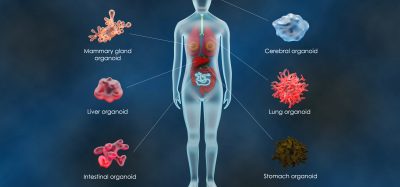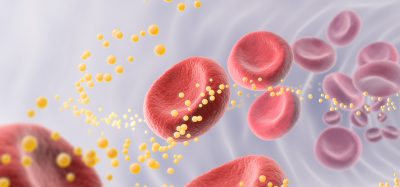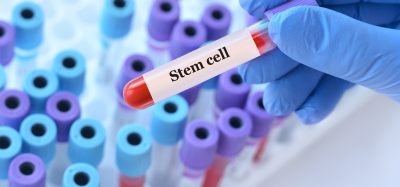Time for change: non-human primates in drug research
Posted: 7 July 2025 | Dr Mariana Argenziano (Associate Director Manufacturing Technologies – Ncardia) | No comments yet
As ethical pressures and new regulations shake up preclinical research, the industry faces a turning point: can we finally move beyond non-human primates? Dr Mariana Argenziano, Associate Director Manufacturing Technologies at Ncardia, discusses the innovations reshaping drug development and what’s coming next.


Non-human primates (NHPs), such as macaques and cynomolgus monkeys, have long served as a cornerstone in preclinical drug development due to their close genetic, anatomical and physiological resemblance to humans. Their unique suitability has made them valuable for evaluating pharmacokinetics, toxicology and safety in drug candidates before human clinical trials. But growing ethical scrutiny, supply shortages, cost burdens, scientific innovation and regulatory shifts like the US Food and Drug Administration (FDA)’s new alternative methods roadmap are bringing the continued reliance on live NHPs into question, and opening the door to next-generation solutions that could eventually replace them altogether.
Persistent challenges with NHP use
Despite their biological relevance, using live NHPs in research poses several major challenges:
- Ethical concerns
NHPs, due to their advanced cognition and social behaviour, are at the centre of ongoing ethical debates. Animal rights groups, policymakers and the public are increasingly vocal in opposing their use in research, with litigation and regulatory interventions intensifying in recent years. For instance, the US Department of Agriculture (USDA) has faced lawsuits over inadequate oversight of primate research facilities1 and federal rulings have called for improved welfare standards.2
This ethical spotlight has practical implications for research institutions and sponsors, including the need for more robust justification protocols, heightened compliance measures and increased risk of reputational harm or funding loss.
- Rising costs and regulatory hurdles
Ensuring NHP welfare comes at a significant financial and operational cost. Institutions must invest in secure housing, specialised veterinary care and rigorous training for handlers. Research using NHPs often requires detailed justification, approval by ethics committees and regular inspections.3-5 These layers of regulation, while essential for animal welfare, make NHP-based studies complex, expensive and time-consuming. - Supply chain disruptions
Availability is a critical bottleneck in NHP-based research. Since 2021, institutions like the National Primate Research Centers (NPRCs) have reported their inability to meet up to two-thirds of requests for research monkeys.6 Geopolitical factors, import restrictions (especially involving China) and breeding challenges have made NHPs a scarce and volatile resource. This scarcity disrupts research timelines and limits the ability to replicate results across studies.
The FDA’s new roadmap
In April 2025, the FDA announced a major regulatory shift with its plan to phase out the requirement for animal testing in the development of monoclonal antibodies and other drugs, when scientifically appropriate.7 This initiative forms part of a broader effort to modernise drug development and align regulatory expectations with emerging new approach methodologies (NAMs), including human cell-based assays, artificial intelligence models and organ-on-chip platforms.
The FDA’s plan introduces a phased strategy that begins with a pilot programme for monoclonal antibody developers, allowing them to submit safety data generated from non-animal methods.7 If successful, the findings from this pilot will inform expanded regulatory guidance and potentially lead to a broader adoption of animal-free approaches across drug categories.
The shift is not only ethical but also pragmatic: the agency cited goals such as lowering research and development costs, accelerating time to market and improving translational relevance between preclinical and clinical outcomes.7 For sponsors and drug developers, this opens the door to integrating more scalable and reproducible alternatives while reducing dependence on difficult-to-source and ethically sensitive animal models like NHPs.
Importantly, this roadmap complements earlier FDA initiatives supporting the use of NAMs,8 signalling a sustained federal commitment to reducing animal use in science without compromising patient safety.
For industry, this is a call to action: those who invest early in validated, human-relevant systems – such as induced pluripotent stem cell (iPSC)-derived models – are likely to gain an advantage in navigating regulatory approvals and meeting evolving ethical expectations.
Alternatives to NHPs
NHPs have long been considered indispensable, especially in immunology, neuroscience and cardiovascular safety studies. However, the last decade has seen a gradual reduction in their use, driven by tightening animal welfare regulations and scientific advances.9
The COVID-19 pandemic also created both a surge in NHP demand and an unprecedented supply crisis, pushing researchers to rethink their dependence on live primates. Since then, pharma and biotech firms have increased investment in alternatives, including computational models, organ-on-chip systems and stem cell technologies.
While some therapeutic areas still rely heavily on NHPs – like biologics and gene therapies – many others are exploring models that offer better scalability and ethical acceptability.
From iPSCs to organ-on-chip
Several alternatives to live NHPs are now in development or early use:
- Human iPSCs: Induced pluripotent stem cells (iPSCs) offer a renewable, patient-specific model for many organ systems; they are scalable, can be integrated into high-throughput studies and are increasingly used for cardiotoxicity, hepatotoxicity and neurotoxicity studies10
- In silico modelling: AI-driven simulations can help predict drug toxicity and pharmacodynamics, though they currently lack the full biological complexity of live organisms11
- Organ-on-chip systems: These microfluidic devices mimic specific tissue environments and are promising for early toxicity screening, but challenges in standardisation, scale and physiological fidelity remain.12
As exciting as they are, these alternatives are a far cry from what many sponsors are currently doing to evaluate preclinical safety, especially cardiotoxicity.
A new wave of alternatives is emerging that will bridge the translational gap and support a smoother transition towards more human-relevant, ethical and scalable research methods.
NHP-C-derived iPSC cardiomyocytes
Ncardia has pioneered Ncyte® NHP-C vCardiomyocytes, the first-ever cardiomyocytes derived from cynomolgus monkey iPSCs.
These cells address several long-standing concerns in preclinical safety testing:13
- Ethics: They eliminate the need to use live NHPs, improving public perception and reducing the regulatory burden
- Cost and logistics: iPSCs can be produced at scale and stored long term, offering a more consistent and accessible research material
- Reproducibility: Unlike live NHPs, iPSC-derived cells are genetically consistent and batch-controlled, enabling more reliable and comparable results
- Biological relevance: Because the cells are species-specific, they maintain the genetic characteristics of the original NHPs – making them ideal for reducing NHP in vivo studies while also offering the possibility of gene-editing and disease modelling in NHP cells.
Conventional models often fail to predict cardiac side effects, especially with biologics. NHP-C cardiomyocytes offer a more predictive and ethical platform, especially for drugs intended to advance from animal testing to first-in-human trials.
How to overcome the challenges of NHP alternatives
While it is unlikely that live NHPs will disappear from research entirely in the near term, their role is becoming more selective. In many areas – especially cardiovascular safety, where alternatives like NHP-derived iPSCs now exist – traditional NHP use may no longer be justified.
The path forwards involves continued validation, regulatory engagement and industry collaboration to accelerate this transition and navigate several significant challenges of NHP alternatives:
- Regulatory acceptance: While the FDA’s roadmap is encouraging, broader international regulatory harmonisation is needed
- Data correlation: Alternatives must demonstrate equivalence or superiority to existing in vivo datasets
- Standardisation: Reproducibility and quality control for cell-based and organ-on-chip models must be robust and well-documented
- Cultural inertia: Many researchers are trained in and accustomed to animal models; shifting mindsets takes time and requires evidence.
To overcome these hurdles, stakeholders must invest in collaborative research, transparent data sharing and regulatory science. Cross-disciplinary efforts that combine pharma, academia, regulators and tech developers will be essential to fully phase out NHP reliance.
Are we nearing a post-NHP future?
The use of NHPs in preclinical research stands at a turning point. Mounting ethical concerns, operational inefficiencies and regulatory reforms are pushing the industry towards a new era of more humane, efficient and predictive science.
Alternatives like Ncardia’s NHP-derived iPSC cardiomyocytes are leading the way, offering a solution that retains the biological advantages of NHPs without the burden of live animal use. As regulatory bodies like the FDA open the door to novel testing platforms, the industry has a clear incentive to embrace innovation.
In the future, the most effective and ethical research won’t rely on tradition – it will be driven by technology, transparency and trust.
References
- Animal Legal Defense Fund v. USDA (2020).
- Federal ruling on USDA primate welfare petition, 2023.
- National Research Council. Guide for the Care and Use of Laboratory Animals. 8th ed.
- European Directive 2010/63/EU on the protection of animals used for scientific purposes.
- NIH Office of Laboratory Animal Welfare – Training Guidelines.
- National Primate Research Centers (NPRCs) Annual Report, 2021.
- S. Food and Drug Administration (FDA). (2025). FDA announces plan to phase out animal testing requirement for monoclonal antibodies and other drugs.
- Modernization of the New Drug Development Process: The Alternative Methods Working Group Roadmap. 2023.
- Bailey J, et al. (2022). Trends in Non-Human Primate Use for Research and Testing. Alternatives to Laboratory Animals, 50(3).
- Lee TYT, Coles JG, Maynes JT. iPSC-cardiomyocytes in the preclinical prediction of candidate pharmaceutical toxicity. Front Pharmacol. 2024;15:1308217.
- Ekins S, Clark AM. (2020). In silico toxicology: computational methods for predicting toxicity. Toxicology Research.
- Low LA, Tagle DA. (2017). Organs-on-chips: Progress, challenges, and future directions. Experimental Biology and Medicine.
- Internal blog source: 3 Major Challenges With Non-Human Primate Research and How to Solve Them. Ncardia, 2024.


Mariana Argenziano, PhD – Associate Director Manufacturing Technologies
Mariana holds a PhD in molecular biology from the University of SanMartin (Buenos Aires) and has worked at several universities in the US for more than eight years, specialising in stem cell biology. Throughout her experience in academic research, she gained distinct knowledge and expertise in both disease modelling and biobank building and in the differentiation of iPSCs into cardiac and neuronal cell types.
In 2022, Mariana joined the manufacturing team at Ncardia, where she pursues new iPSC manufacturing procedures and scale-up processes to support their application in regenerative medicine and drug discovery.
Related topics
Analysis, Animal Models, cytotoxicity, Cytotoxicity assays, Drug Development, Drug Discovery, Drug Discovery Processes, In Vivo, Lab-on-a-Chip, Organ-on-a-Chip, Organoids, Toxicology
Related organisations
Ncardia








